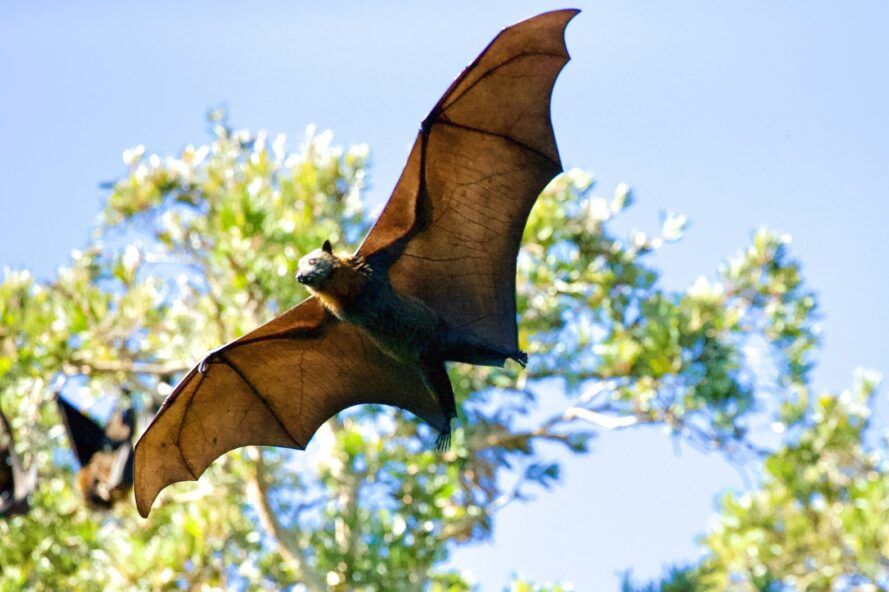
Bat Week has swooped down upon us, didn’t you know?
This is the time of year when people display big pictures of cartoonish fanged bats in their windows and hang rubber bats from the ceilings at Halloween parties. But behind the scenes, real live bats are busy year round pollinating plants, eating insects and spreading seeds to grow new trees and plants. Bat Week, an international celebration that runs October 24 to 31, recognizes the contributions of these fascinating critters and raises awareness about the need for bat conservation.
Continue reading below
Our Featured Videos

Bat facts
Why should humans celebrate bats? Because we need them. With more than 1,400 species, bats make up almost 20% of the world’s total mammal species. Except for extreme polar regions and deserts, bats are everywhere, often working behind the scenes. One bat can eat up to its body weight in insects in a single night. That’s a lot of mosquito bites the bat community is sparing you from. All this insect eating also helps prevent forests and food crops from being decimated by bugs.
Related: Save bats from becoming extinct
Bats range in size from the tiny bumblebee bat that weighs in at less than a penny, to giant fruit bats, also known as flying foxes. These megabats live in South and Southeast Asia, Australia, East Africa and some islands in the Indian and Pacific Oceans. They have wingspans of up to six feet! Bats are the only legit flying mammal — although some others glide.
What kind of bats live near you? Check out the Bat Week database where you can pull up a list of your bat neighbors by country or U.S. state. Each species gets a profile and a close-up of its funny little face.
Of course, around Halloween, people’s thoughts turn to vampire bats. But, of the many bat species, only three drink blood: the common, white-winged and hairy-legged vampire bats. These bats mostly drink the blood of livestock and birds, but also bite snakes, sea lions, porcupines and armadillos. And, if you sleep outside in vampire bat territory, they might take a bite out of you. In this unlikely event, they’ll only drink about a tablespoon of your blood. But make sure to get a rabies shot.

Bat Week events
Okay, we’ve ruled out camping with vampire bats as a Bat Week activity. That said, there are tons of batty events going on across the country this week. They range from in-person talks on night time pollinators at a nature center in Arkansas to a virtual lunch and learn about bats in Southern Appalachia. Arizona Game and Fish is offering a webinar for educators called The Unlovable Bats.
Bats are one of the animals that are sometimes called “the unlovables” because many people dislike them. This webinar will clear up bat misunderstandings and offer classroom activities to build bat appreciation among youth. In Staunton, Virginia, conservation-minded folks will gather for a Flappy Hour where you can “meet a bat, play some fun bat trivia and win cool prizes.” See the full Bat Week event list here.
Be a bat hero!
We need bats, but they need us, too. Especially in this time of burgeoning human population and worldwide habitat encroachment. Bat Week is the perfect time to help out a winged friend. You may not be able to afford your own summer home, but you can build or buy one for a bat. Attach these little wooden boxes up high in a tree or to the side of a house or shed. They play a vital role in bat survival as a place to give birth and raise baby bats.
There are lots of ways to raise awareness of bats. You could host a Bat Week party with bat-themed decorations, games and food or even start planning for a full-on bat festival in your community next year. If you’re artistic, you could paint a bat mural. You can get a template for a mural here.

More scientific-minded bat enthusiasts can join a tracking effort. Project Noah, which bills itself as “a global community of nature enthusiasts photographing and learning about wildlife,” lets you contribute to the North American Bat Tracker. You send pictures of bats and the habitat you see them using, along with location, time, weather conditions and what bats are doing. Whether they’re hunting in the meadow or just hanging on a window screen, Project Noah wants to know what the bats in your area are up to.
The Bat Week website offers lots of classroom activities for teachers. Here you’ll find out how to build a bat cave, make a big-eared bat finger puppet or make bat stencils. You can listen to the song “Bats on the Brink” or choose recipes from a cookbook featuring bat-dependent ingredients.
Bats get social
Want to keep learning about bats year-round? Follow top bat social media accounts to stay up-to-date with all things batty. Some of the top names in bat matters include BatWeek, Bat Conservation International, Lubee Bat Conservancy, the National Park Service and Parks Canada.
Via Bat Week
